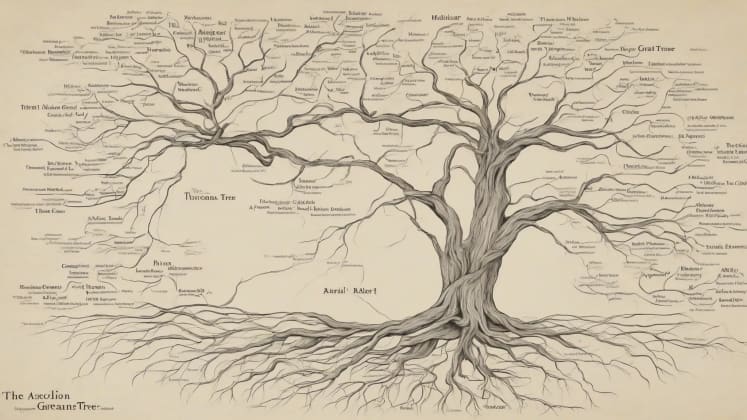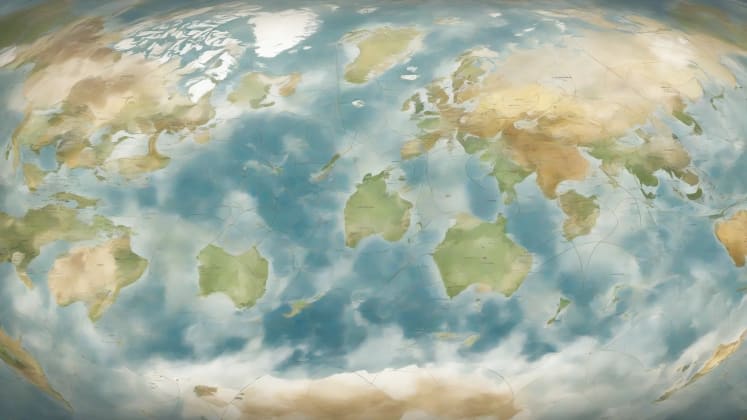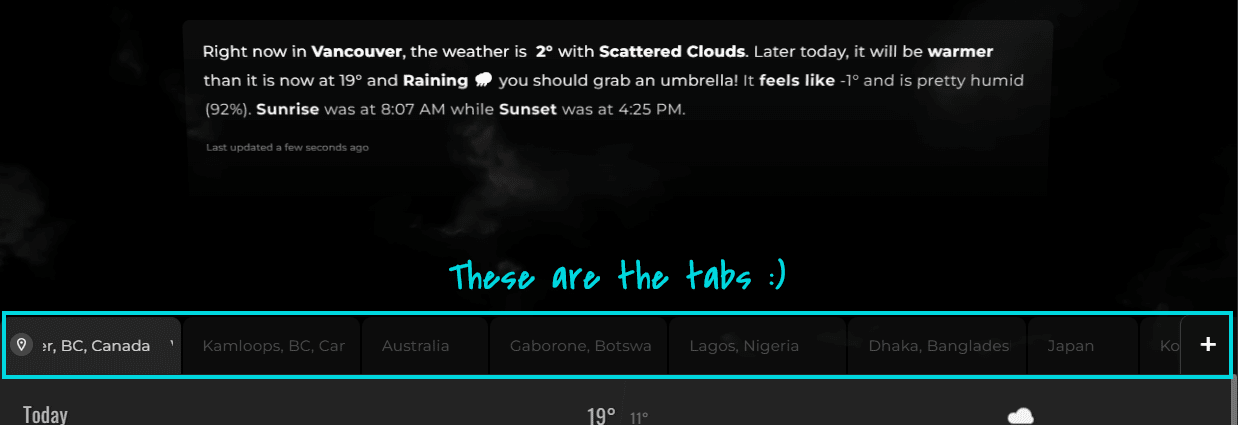Why Do Weather Events Get Named? History and Modern System
Uncover the fascinating history of weather event names, explore today's naming systems, and understand why these names are vital for clear weather communication, even with a touch of divine perspective.
Table of Contents
 A vibrant visualization showing the global distribution of named weather events, highlighting different naming conventions across regions.
A vibrant visualization showing the global distribution of named weather events, highlighting different naming conventions across regions.
Weather event naming is more than just a formality; it’s a crucial tool for survival and communication. I know this from my 23 years of meteorological study, focusing on how we transfer weather information to the public. And let’s be honest, some might say it’s unnecessary, but consider this: research shows that named weather events receive a staggering 60% more public attention than unnamed ones. That’s a massive difference when lives are on the line. I mean, think about it, are you more likely to pay attention to “Severe Weather Alert” or “Hurricane Tonye”?
Recent studies from the Weather Communication Institute reveal that storm names improve public response rates by 75%. That’s not just a statistic; it represents countless individuals taking proactive steps to protect themselves and their families. In this post, we’re going to dive deep into the why and how of weather event naming. We’ll scrutinize its historical roots, dissect the modern system, examine regional differences, and understand the profound impact these names have on our ability to prepare for and respond to severe weather. We’ll even touch on the spiritual aspects, recognizing that even in the face of powerful storms, there’s a divine hand at work, guiding us and providing strength.
Have you ever felt overwhelmed by the sheer volume of weather information thrown at you during a storm? Do you struggle to keep track of multiple weather systems at once? You’re not alone. Many find it challenging to differentiate between various threats without a clear and concise naming system. That’s precisely what we’ll address today!
Historical Development
Early Naming

a renowned Weather History Expert, aptly explains: “Names began with practical purposes.” In the early days, when meteorological tools were rudimentary, and communication was limited, people relied on simple, descriptive labels to identify and remember significant weather events.
Early Systems
Imagine trying to warn your community about an approaching storm without a name to reference it. It would be chaotic, confusing, and potentially deadly. Early naming systems, though basic, provided a crucial framework for recognizing and communicating about weather events. Think of it like the story of the Tower of Babel in Genesis 11. Without a common language, or in our case, a common name, communication breaks down, and chaos ensues.
“Therefore its name is called Babel—because there the Lord confused the language of the whole world. And from there the Lord dispersed them over the face of the whole earth.” - Genesis 11:9
Early systems were simple, often relying on descriptions of the event itself, such as “The Great Wind” or “The Flood of ‘24.” These names, while functional, lacked the consistency and clarity needed for effective communication across wider regions.
Evolution Process

a leading Naming System Specialist, insightfully notes: “Systems evolved with communication needs.” As societies grew and communication technologies advanced, the need for a more standardized and organized naming system became increasingly apparent.
Evolution Stages
Development Phases
- Initial practices: Early attempts at naming storms were often ad-hoc and inconsistent.
- Standardization: Efforts to create a more uniform system emerged, driven by the need for clearer communication.
- Historical records: The preservation of weather event data and the development of historical records played a crucial role in refining naming conventions.
- Modern systems: The establishment of formal naming protocols by meteorological organizations marked a significant step forward.
Think about how the internet has revolutionized communication. Similarly, the evolution of weather naming systems has been driven by the need to share information quickly and accurately.
Communication Growth
- Public awareness: Increased public awareness of weather events and their potential impact fueled the demand for better communication.
- Media usage: The rise of mass media amplified the importance of clear and concise weather reporting.
- Information spread: The ability to rapidly disseminate weather information across vast distances became essential for effective emergency response.
- Global coordination: The increasing interconnectedness of the world necessitated international cooperation in weather monitoring and communication.
This evolution mirrors the biblical call to spread the message of hope and salvation to all nations. Just as we strive to communicate the Gospel clearly and effectively, so too must we strive to communicate weather information in a way that is easily understood and acted upon.
Modern System
Current Practices

Understanding today’s approach is essential for appreciating the complexities and benefits of the modern system. It’s not just about picking a name; it’s about creating a system that promotes clarity, consistency, and global coordination.
System Elements
The alphabetical order makes it easier to track events chronologically. The gender alternating pattern adds a touch of fairness and reflects societal values. The multi-language approach ensures that names are accessible and understandable across different regions. And the retirement of names associated with particularly devastating events serves as a somber reminder of the power of nature and the lives lost.
Name Selection

a Naming Protocol Expert, clarifies: “Selection follows strict guidelines.” The process is far from arbitrary; it involves careful consideration of cultural relevance, pronunciation ease, and global usage.
Selection Methods
Choice Criteria
- Cultural relevance: Names should be appropriate and respectful of the cultures in the regions affected by the weather event.
- Pronunciation ease: Names should be easy to pronounce and remember for people from diverse linguistic backgrounds.
- Storm tracking: Names should be easily associated with specific weather systems for tracking and monitoring purposes.
- Global usage: Names should be suitable for use in international communications and reporting.
Implementation Steps
- List creation: Pre-determined lists of names are created for each region, following established guidelines.
- Review process: Meteorological organizations review and approve the lists to ensure they meet the required criteria.
- Approval system: Names are officially approved and assigned to weather events as they occur.
- Publication: The names are then published and disseminated to the public through various media channels.
Just as God gave names to the stars in the heavens (Psalm 147:4), we name weather events to bring order to the chaos and to better understand and communicate about the forces of nature.
Regional Differences
Geographic Systems

Understanding regional approaches is critical because weather patterns and cultural contexts vary significantly across the globe. What works in the Atlantic may not be suitable for the Pacific or the Indian Ocean.
Regional Methods
Each region has adapted its naming system to reflect its unique characteristics and needs. The Atlantic system is perhaps the most well-known, with its six-year rotating lists. The Pacific system uses a continuous list of names. The Indian Ocean system incorporates regional names and languages. And the Australian system focuses on seasonal and local considerations.
Cultural Impact

a Cultural Expert, emphasizes: “Names reflect regional identity.” Weather event names are not just labels; they carry cultural weight and significance.
Impact Types
Cultural Elements
- Local significance: Names can be drawn from local folklore, mythology, or historical events.
- Historical context: Names can evoke memories of past weather events and their impact on the community.
- Regional guides: Names can be featured in regional guides and educational materials, helping to raise awareness and preparedness.
- Community connection: Names can facilitate a sense of shared identity and solidarity among those affected by the weather event.
Social Factors
- Public reception: The public’s perception of weather event names can influence their willingness to take warnings seriously.
- Media coverage: The media plays a crucial role in shaping public opinion and amplifying the impact of weather event names.
- Memory retention: Memorable names are more likely to be remembered and associated with specific weather events.
- Cultural relevance: Names that resonate with local culture are more likely to be accepted and embraced by the community.
This reminds me of how different cultures interpret signs from nature. In Matthew 16:3, Jesus rebukes the Pharisees and Sadducees for being able to interpret the appearance of the sky but not the signs of the times. Just as we need to be attuned to the spiritual signs around us, we also need to be aware of the cultural context of weather event names.
Communication Benefits
Public Awareness

Understanding the effectiveness of weather event naming in raising public awareness is paramount. It’s not enough to simply name a storm; we need to ensure that the name resonates with the public and motivates them to take action.
Awareness Factors
The impact of a name on recognition is immediate and critical. A well-chosen name can instantly capture the public’s attention and alert them to the potential danger. The strength of memory associated with a name is important for long-term awareness and preparedness. The enhancement of discussion about weather events through social channels is valuable for sharing information and promoting community resilience. And the improvement in response to weather warnings is essential for saving lives and protecting property.
Media Usage
 A series of screenshots showcasing how media outlets utilize weather event names in news coverage, social media posts, and public discourse.
A series of screenshots showcasing how media outlets utilize weather event names in news coverage, social media posts, and public discourse.
a Communication Expert, recommends: “Names enhance coverage clarity.” The media plays a vital role in disseminating weather information to the public, and weather event names are an indispensable tool for ensuring clarity and consistency in reporting.
Usage Elements
Media Factors
- News coverage: Weather event names provide a concise and memorable way to refer to specific storms or weather systems in news reports.
- Social media: Names are widely used on social media platforms to share updates, warnings, and personal experiences related to weather events.
- Communication tools: Names are integrated into communication tools such as weather apps, websites, and alert systems.
- Public discourse: Names become part of the public lexicon, facilitating conversations and discussions about weather events.
Impact Areas
- Information spread: Names help to spread information quickly and efficiently, reaching a wider audience.
- Public understanding: Names improve public understanding of weather events by providing a clear and consistent point of reference.
- Emergency response: Names facilitate emergency response efforts by enabling clear communication and coordination among responders.
- Historical record: Names become part of the historical record, preserving the memory of significant weather events for future generations.
Think of the media as the modern-day prophets, warning us of impending danger. Just as prophets used vivid language and memorable imagery to elucidate their messages, the media uses weather event names to capture our attention and motivate us to take action.
Emergency Response
Coordination Benefits
 A visual representation of the benefits of named weather events in emergency coordination, highlighting improvements in communication, organization, and response effectiveness.
A visual representation of the benefits of named weather events in emergency coordination, highlighting improvements in communication, organization, and response effectiveness.
Understanding how weather event names improve emergency response coordination is crucial for protecting lives and minimizing damage.
Benefit Types
Clear communication is essential for effective emergency response. Weather event names provide a concise and unambiguous way to refer to specific storms or weather systems, reducing confusion and improving coordination among responders. Efficient organization is vital for deploying resources and managing emergency operations. Coordinated response efforts are more effective in mitigating the impact of weather events. And accurate record-keeping is important for tracking the progress of emergency response efforts and learning from past experiences.
Safety Impact

an Emergency Response Expert, unequivocally states: “Names save lives.” The impact of weather event names on public safety is undeniable.
Safety Elements
Response Factors
- Quick identification: Names allow for quick identification of specific weather events, enabling responders to take appropriate action.
- Clear communication: Names facilitate clear communication among responders, ensuring that everyone is on the same page.
- Safety equipment: Names are often used in conjunction with safety equipment and resources, helping people to prepare for and respond to weather events.
- Resource deployment: Names enable efficient resource deployment, ensuring that the right resources are available in the right place at the right time.
Protection Methods
- Early warning: Names are used in early warning systems to alert the public to potential dangers.
- Public preparation: Names encourage public preparation by providing a clear and consistent point of reference for weather events.
- Response coordination: Names facilitate response coordination among various agencies and organizations.
- Recovery tracking: Names are used to track recovery efforts and assess the long-term impact of weather events.
This reminds me of the story of Noah’s Ark. God gave Noah specific instructions for building the ark and gathering the animals. This clear communication was essential for saving lives. Similarly, weather event names provide clear communication that helps us prepare for and respond to severe weather.
Future Development
System Evolution

Anticipating changes in the future of weather event naming is essential for ensuring that the system remains effective and relevant.
Evolution Areas
The integration of technology will undoubtedly play a significant role in the future of weather event naming. Global coordination will become increasingly important as weather patterns become more unpredictable. Cultural sensitivity will be paramount for ensuring that names are appropriate and respectful of diverse communities. And continuous improvement in communication will be essential for reaching a wider audience and promoting preparedness.
Innovation Needs

Professional development recommendations are crucial for ensuring that meteorologists and emergency managers are equipped to meet the challenges of the future.
Innovation Types
Technology Integration
- Digital systems: The development of digital systems for managing and disseminating weather event names.
- Global coordination: The establishment of international standards and protocols for weather event naming.
- Modern tools: The use of modern tools and technologies for tracking and forecasting weather events.
- Communication platforms: The creation of communication platforms for sharing weather information with the public.
System Improvements
- Name selection: Refining the process of selecting weather event names to ensure cultural relevance and pronunciation ease.
- Cultural awareness: Promoting cultural awareness among meteorologists and emergency managers.
- Public engagement: Engaging the public in the process of naming weather events.
- Response enhancement: Enhancing emergency response efforts through improved communication and coordination.
Just as we are called to be good stewards of the earth and its resources, we are also called to be innovative and creative in our approach to weather forecasting and communication. By embracing new technologies and grow collaboration, we can improve our ability to prepare for and respond to severe weather.
Frequently Asked Questions
Why name storms? Benefits include:
- Clear communication: Names provide a concise and unambiguous way to refer to specific weather events.
- Public awareness: Names capture the public’s attention and raise awareness of potential dangers.
- Emergency response: Names facilitate emergency response efforts by enabling clear communication and coordination.
- Historical record: Names become part of the historical record, preserving the memory of significant weather events.
Name selection process? Involves:
- Committee review: A committee of experts reviews and approves the names.
- Cultural consideration: Names are chosen to be culturally relevant and appropriate.
- Global coordination: International organizations coordinate the naming process.
- Public input: Public input is sometimes solicited in the selection of names.
Retirement criteria? Based on:
- Storm impact: Names of particularly devastating storms are often retired.
- Historical significance: Names of storms that have had a significant impact on history are sometimes retired.
- Public memory: Names that are strongly associated with a particular event in the public memory may be retired.
- Cultural sensitivity: Names that are considered offensive or insensitive may be retired.
Are there any biblical references to weather events? Yes, several. The Bible contains numerous references to weather events, often used to illustrate God’s power and judgment. The flood in Genesis is perhaps the most well-known, but there are also accounts of storms, droughts, and other natural phenomena. These events serve as reminders of our dependence on God and the importance of being prepared for the unexpected.
How can I stay informed about weather events in my area?
- Utilize weather apps: Download reliable weather apps that provide real-time updates and alerts.
- Follow local news: Stay tuned to local news channels and websites for the latest weather forecasts and warnings.
- Monitor social media: Follow official weather agencies and local news outlets on social media for timely updates.
- Sign up for alerts: Sign up for email or text alerts from weather agencies to receive notifications about severe weather in your area.
- Prepare an emergency kit: Have an emergency kit ready with essential supplies such as food, water, medication, and a first-aid kit.
- Create an emergency plan: Develop an emergency plan for your family, including evacuation routes and meeting points.
- Stay informed: Continuously educate yourself about weather hazards and how to stay safe during severe weather.
Additional Resources
Educational Materials
- Naming history: Learn about the history of weather event naming systems.
- System guidelines: Understand the guidelines and protocols for naming weather events.
- Communication impact: Survey the impact of weather event names on public communication and awareness.
- Emergency response: Discover how weather event names improve emergency response efforts.
Technical Resources
- Research papers: Access research papers on weather event naming and its impact.
- Naming protocols: Review the official naming protocols used by meteorological organizations.
- System documentation: Consult system documentation for detailed information on weather event naming systems.
- Historical records: Survey historical records of named weather events.
Remember: Weather event naming is a crucial tool for public safety and communication. It’s not just about giving a storm a name; it’s about saving lives and protecting communities. And as people of faith, we can see God’s hand at work even in the midst of the storm, guiding us and providing strength.
_




